The Samsung Galaxy Note5 and Galaxy S6 edge+ Review
by Joshua Ho on October 2, 2015 8:00 AM ESTSystem Performance Cont'd
Now that we’ve covered some of the traditionally CPU-bound tests, we can start to look at tests that more strongly emphasize GPU performance. It’s worth noting here that while 3DMark is supposed to determine gaming and graphics performance, the overall score includes a CPU performance component in the form of a physics test that means it isn't much of a pure GPU test.
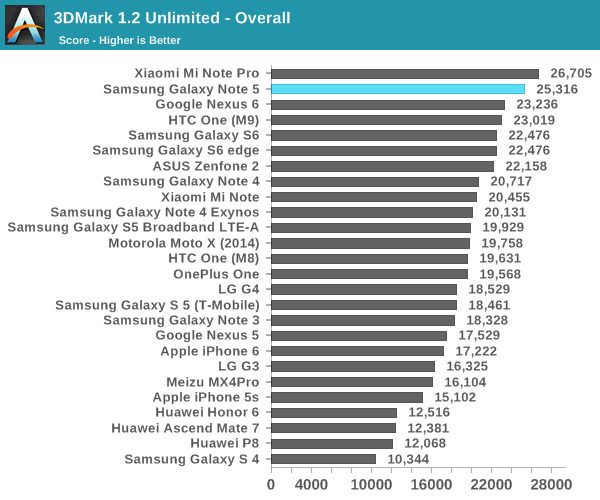
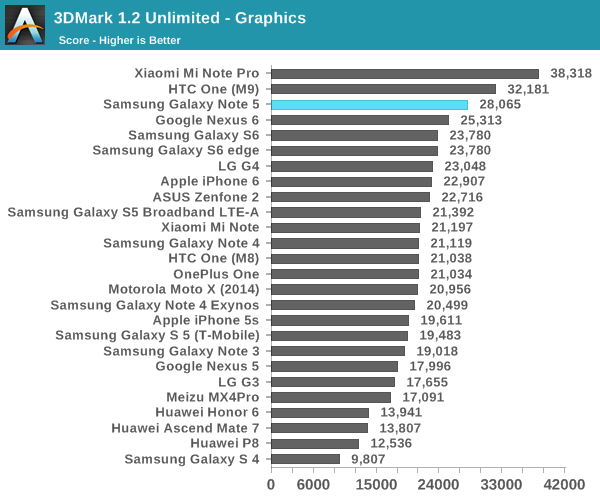
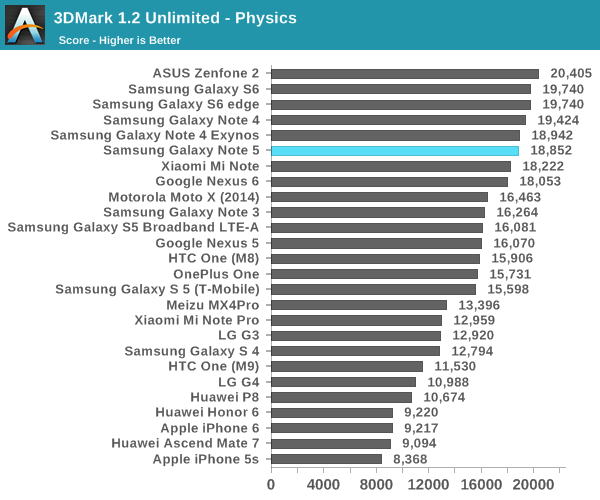

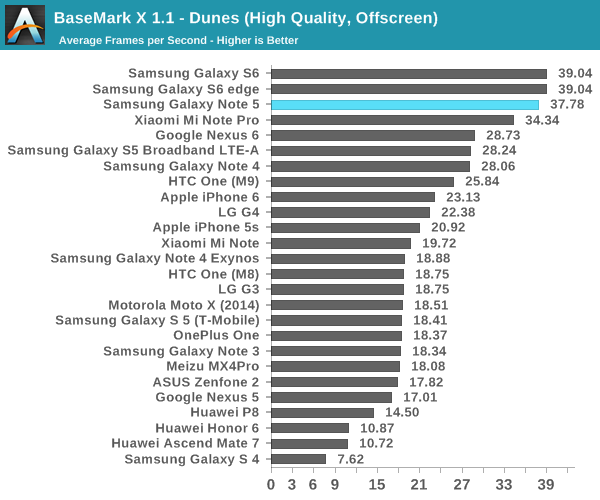
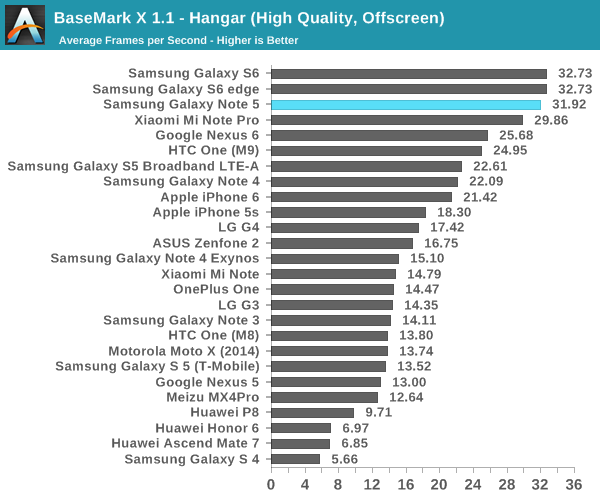
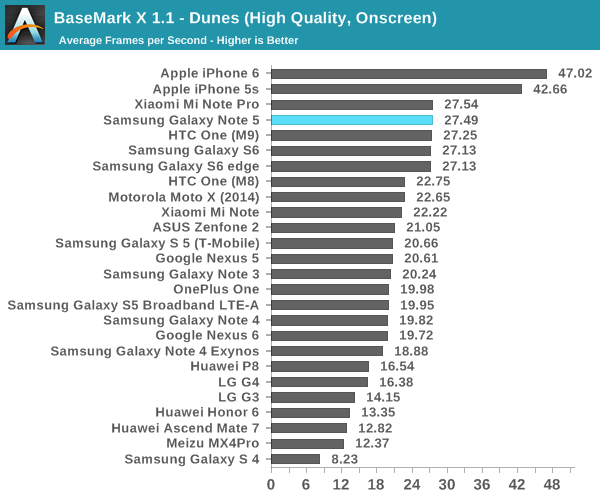
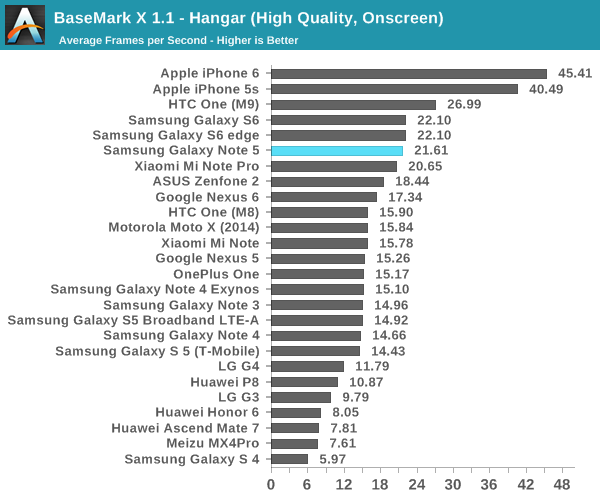
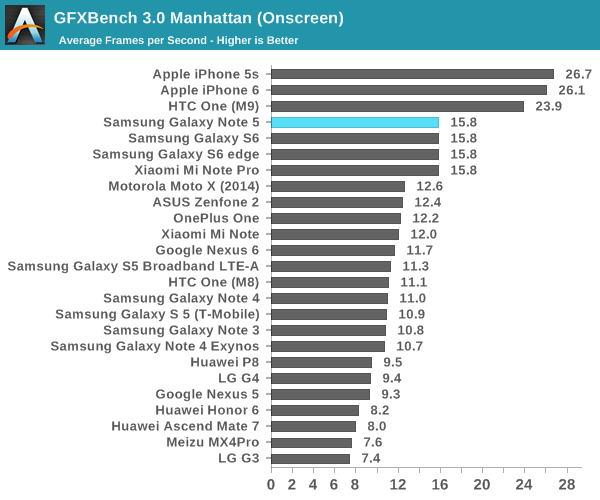
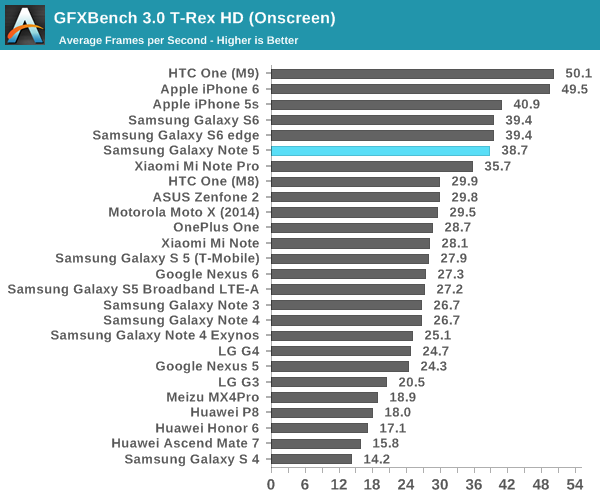
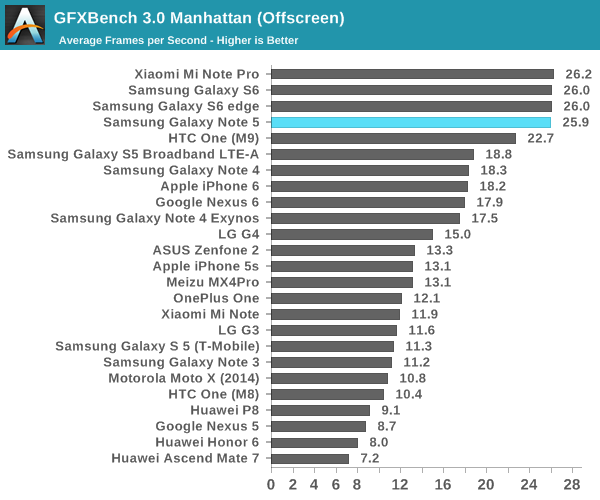
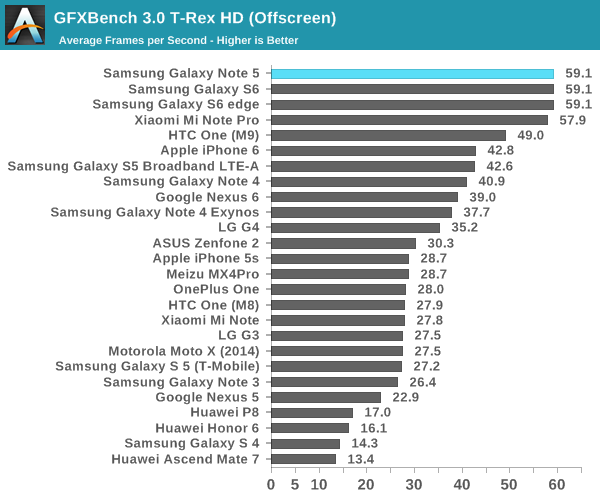
Overall, there's nothing really surprising about these results. The Exynos 7420 should continue to deliver great GPU performance for anyone interested in a high-end phablet or smartphone. There are some improvements in 3DMark in regards to graphics performance, but it's likely that we're just looking at newer drivers as the GPU doesn't heat up fast enough for throttling to be affecting these results.
NAND Performance
At this point, it’s probably not a surprise to know that NAND performance can have very real effects on user experience. If an OEM decides to skimp heavily on storage in order to drive the price down, it’s at least somewhat likely that the device will start to exhibit major IO pauses at some point in the device lifecycle. In order to test this, we rely on our standard storage tests which include Androbench with some custom settings to get more realistic test results along with StorageBench for iOS which is comparable to Androbench.
In the case of the Galaxy Note5 we’re still looking at a UFS storage solution similar to what was found in the Galaxy S6, but it looks like this is slightly newer as the storage is identified as a Toshiba THGLF2G8J4LBATDA chip rather than the Samsung variant that was found in the Galaxy S6. It’s unclear whether Samsung is now multi-sourcing UFS storage for their mobile devices or what distribution exists here.
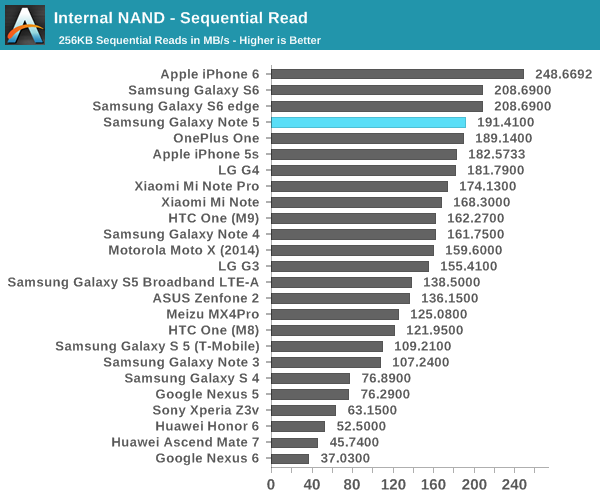
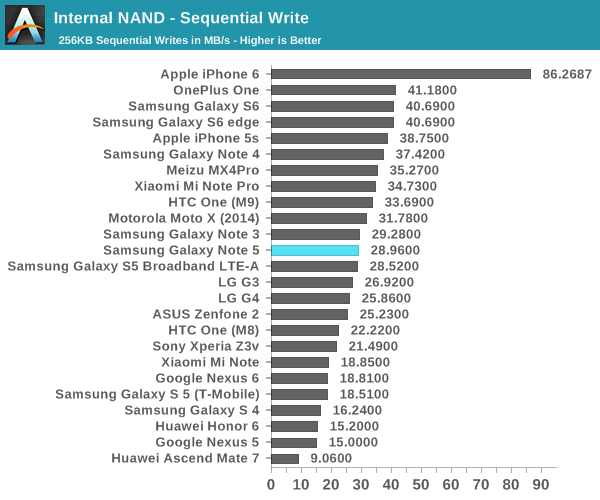
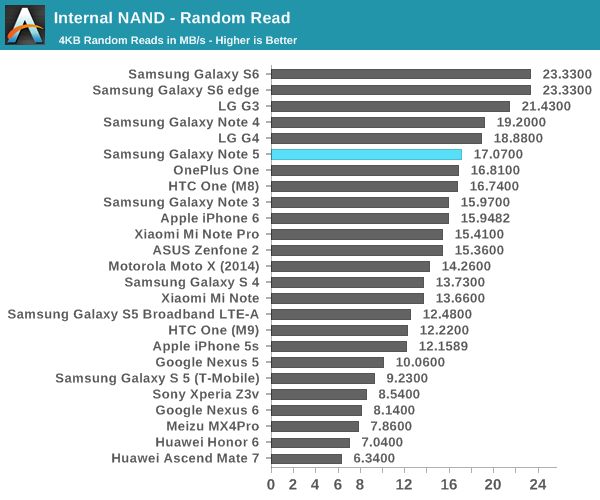
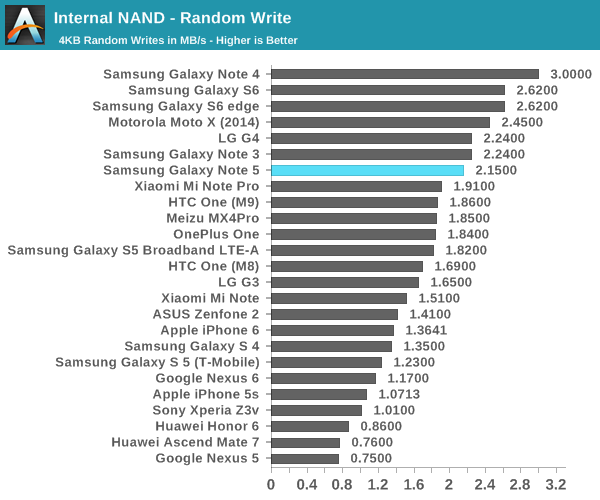
Interestingly, the Note5 regresses a little bit in storage performance relative to the Galaxy S6, which is likely due to the shift to Toshiba's NAND. However, this difference is small enough that in everyday use it's unlikely that it will be noticed. Performance over time should be acceptable as well.










225 Comments
View All Comments
osxandwindows - Saturday, October 24, 2015 - link
People don't buy the iPhone because of that.You must be one your self to call people who by them a sheep.
lucam - Friday, October 2, 2015 - link
Why you haven't add the iPhone 6s results? Are you still updating the bench?Ryan Smith - Friday, October 2, 2015 - link
The iPhone 6s is still being reviewed. This was actually completed ahead of the 6s launch, though we had to hold off on publishing it for a few days.lucam - Friday, October 2, 2015 - link
Fair enough, thanks.harrietpubman - Friday, October 2, 2015 - link
Is there any timeline for when the 6s/6s+ review will be completed and published? Next week perhaps?Kuzi - Friday, October 2, 2015 - link
Their Apple overlords ordered iAnandtech to hold off publishing the Note 5/Edge 6 + review until iPhone6S/6S+ are released as to not jeopardize their sales.ws3 - Friday, October 2, 2015 - link
If that were true then their Apple overlords would also have ordered them to include the iPhone 6s benchmark results to show the Exynos 7420 being crushed by the A9. Since that didn't happen, your assertion is wrong.Kuzi - Friday, October 2, 2015 - link
They did just that few days ago by showing preliminary iPhone 6S benchmarks.A9 GPU is much faster yes, but CPU is faster only on single/dual apps/benchmarks. Android utilizes quad-cores when running apps as shown on Anandtech last month, so CPU performance for exynos 7420 or Snapdragon 810 should be able to match or beat that of the A9.
tipoo - Friday, October 2, 2015 - link
Android uses 8 cores well - that article also showed apps themselves don't. Games and such which need the performance most, usually don't use more than 3-4, even if Android is good at using 8.Morawka - Friday, October 2, 2015 - link
because most arm soc's never use 8 cores all at once.. it's big.Little.. 4 core for high performance, then 4 core for mundane task